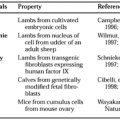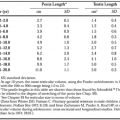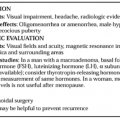DEFINITION OF HYPOOSMOLALITY
The only clinical abnormality known to result from increased secretion of arginine vasopressin (AVP) is a decrease in the osmotic pressure of body fluids. Hence it is appropriate to begin this chapter by considering how osmotic pressure, or osmolality, is determined and the factors that can influence these measurements.
The osmolality of body fluid normally is maintained within narrow limits by osmotically regulated AVP secretion and thirst (see Chap. 25). Although basal plasma osmolality can vary appreciably among individuals, under conditions of normal hydration, the range in the general population lies between 275 and 295 mOsm/kg H2O. Plasma osmolality can be determined by direct measurement using either freezing-point depression or vapor pressure. Alternatively, it can be calculated from the concentrations of the major solutes in serum:
pOsm (mOsm/kg H2O) = 2 [Na+] (mEq/L) +
glucose (mg/dL)/18 + blood urea nitrogen (mg/dL)/2.8
The two methods produce comparable results under most conditions. Although these methods yield valid measures of total osmolality, however, this is not always equivalent to effective osmolality, sometimes referred to as the tonicity of the fluid.6 Only those solutes that remain relatively compartmentalized within the extracellular fluid (ECF) space (e.g., sodium and chloride) are considered to be effective solutes, because they create osmotic gradients across cell membranes and thus are capable of causing osmotic movement of water from the intracellular fluid (ICF) compartment to the ECF compartment. In contrast, solutes that readily permeate cell membranes (e.g., urea, ethanol, methanol) are not effective solutes, because they do not create osmotic gradients across cell membranes and thus are not capable of causing water movement between fluid compartments. Consequently, only the concentration of effective solutes in serum should be used to define clinically significant hypoosmolality or hyperosmolality of serum, because these are the only solutes that affect cellular hydration.
Stay updated, free articles. Join our Telegram channel

Full access? Get Clinical Tree






